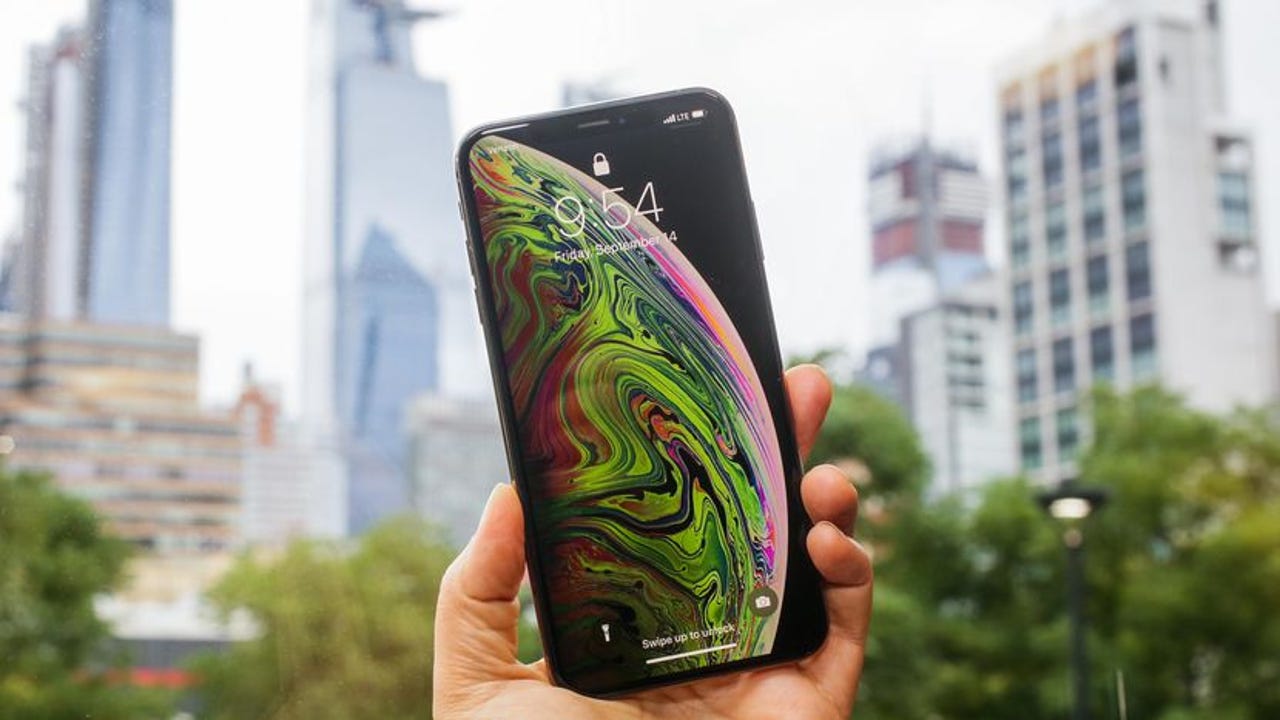iPhone XS Max, Apple Watch Series 4, HP EliteBook 1050 G1 and more: Reviews round-up


iPhone XS Max
The iPhone XS Max is the best iPhone Apple has ever made. Sure, that can be said about each year's new iPhone crop, but the iPhone XS Max sets the bar for iPhone and Android smartphones. The only downside to the XS Max is its price tag. It starts at $1,099 for the 64GB model and maxes out at $1,449 for the 512GB model. Those prices for a smartphone are insane, and yet Apple is confident that users are willing to pay a premium.
For more see: iPhone XS Max review: The iPhone's future is big and bright
Apple Watch Series 4
Apple's new Watch Series 4 is a nice improvement over previous generations and current Apple Watch fans are certain to be very happy with this new model. However, with the increased price ($70 more than last year's Apple Watch 3 to start) and stiff competition from Samsung, the Galaxy Watch (now available in a smaller size) is a compelling option for iPhone users too.
For more see: Apple Watch Series 4 review: Best for iPhone owners, but not the best smartwatch
Apple macOS Mojave
It may have been overshadowed by the new iPhone range and the release of iOS 12 earlier this month, but macOS 10.14, codenamed Mojave, turns out to be one of the more interesting updates to arrive on the Mac in recent years. Now that the final version of Mojave is available, business users would be advised to perform a preliminary software audit to ensure that their business-critical software and apps are compatible.
For more see: Apple macOS Mojave, First Take: Eye-candy and productivity in equal measure
Parallels Desktop 14 for Mac
With macOS Mojave now ready, it's time for version 14 of Parallels Desktop to make its debut. The newly released v14 is forward-looking, allowing you to create Windows virtual machines (VMs) that support new technologies, such as Intel's high-performance AVX-512 instruction set, which is used in the current Xeon-based iMac Pro, as well as the next generation of Cannon Lake chips. The developers have also improved OpenGL support for Windows VMs.
For more see: Parallels Desktop 14 for Mac, First Take: Faster, more efficient and macOS Mojave-ready
Asus ZenBook Pro 15
The ZenBook Pro 15 is decent enough to function as a work laptop, but without ScreenPad there is little else exceptional about it. If the ScreenPad had a unique killer use case that could show off its potential, then the laptop would be much the better for it. As it stands, though, Asus has to decide whether the ZenBook Pro is the start of something new, or an evolutionary dead end.
For more see: Asus ZenBook Pro 15 with ScreenPad: Potentially pointing to the future
Lenovo ThinkPad E580
The Lenovo ThinkPad E580 is a well-built laptop with a great keyboard that includes a separate number pad. The array of ports and connectors on offer might not meet all needs, and the entry-level model's screen resolution may have limited appeal. But with smart configuration, this could prove to be a well-priced laptop for the canny business buyer.
For more see: Lenovo ThinkPad E580 review: A well-priced 15-inch business laptop with a great keyboard
Sony Xperia XZ3
The Xperia XZ3 is a return to form for Sony, with the OLED screen a particular highlight. Shipping with Android 9 is a definite lure, too. However, the Side Sense edge control system is flawed, dynamic vibration seems rather gimmicky, and the single-lens rear camera seems a touch old-fashioned.
For more see: Sony Xperia XZ3 review: OLED screen marks a return to form
Huawei Mate 20 Lite
The Huawei Mate 20 Lite is a large handset, and that's both a blessing and a curse. The 6.3-inch screen lends itself well to media-rich tasks, but the phone can be tricky to pocket. It has good battery life and a solid chassis, although the glass back does attract fingerprints. This is otherwise a good competitor for the likes of the Asus Zenfone 5 and (Huawei sister brand) Honor 10. If you can stretch your budget a little further, the excellent OnePlus 6 deserves a place on your shortlist.
For more see: Huawei Mate 20 Lite review: A decent large-screen mid-range handset with too much bloatware
HP EliteBook 1050 G1
HP's EliteBook 1050 G1 is large and heavy, and won't easily fit into a bag or backpack. With a 15.6-inch screen and a discrete Nvidia GPU option, it's well suited to running graphically demanding applications. Battery life is impressive too, and the EliteBook 1050 G1 even has a decent audio subsystem, which is something of a rarity for a laptop.
For more see: HP EliteBook 1050 G1 review: A slim 15-inch business laptop with high-end options
LG Gram 14
The LG Gram 14 has two key features: excellent battery life and sub-1kg weight. Its general compactness and high-quality IPS LCD screen are also plus points. It's a shame the otherwise good keyboard is let down by an Enter key that's too small, and that the speakers are located on the underside of the chassis rather than somewhere they can project outwards.
For more see: LG Gram 14 review: Compact, lightweight and long-lasting
Philips Momentum 436M6VBPA
At 43 inches, the Philips Momentum 436M6VBPA is a large display -- it's effectively a 4K Ultra HD HDR television, only without the broadcast tuner or smart TV features of a TV. The viewing angle performance isn't great, but that's less of an issue when the monitor is viewed at an appropriate distance for its size.
For more see: Philips Momentum 436M6VBPA review: A versatile 43-inch 4K HDR display
Gemini PDA
Back in April, we wrote a 'first take' review of the Gemini PDA, a clamshell Android device that takes design inspiration, and some software smarts, from the 1997 Psion Series 5. This is our long-term report on the device. We'd love to have a Gemini PDA just for the sheer joy of typing on its fabulous keyboard and producing accurate text at good speed on a (just about) pocketable device. But we know we'd carry a smartphone as well.
For more see: Gemini PDA: A long-term evaluation of the reborn Psion Series 5